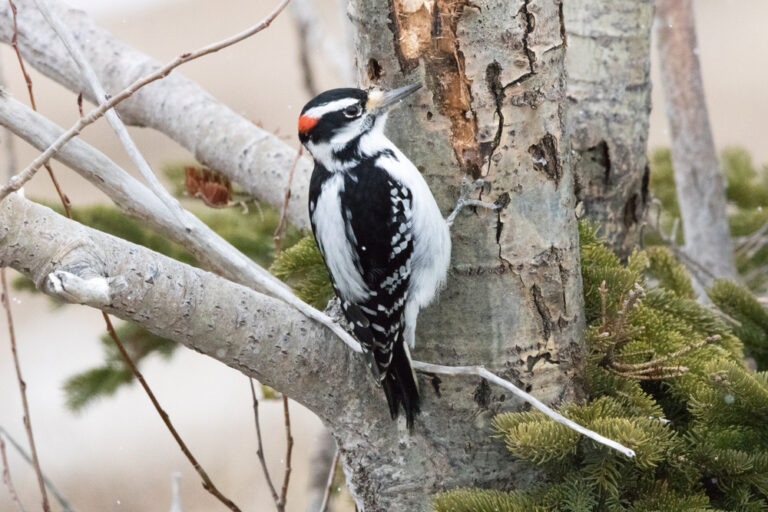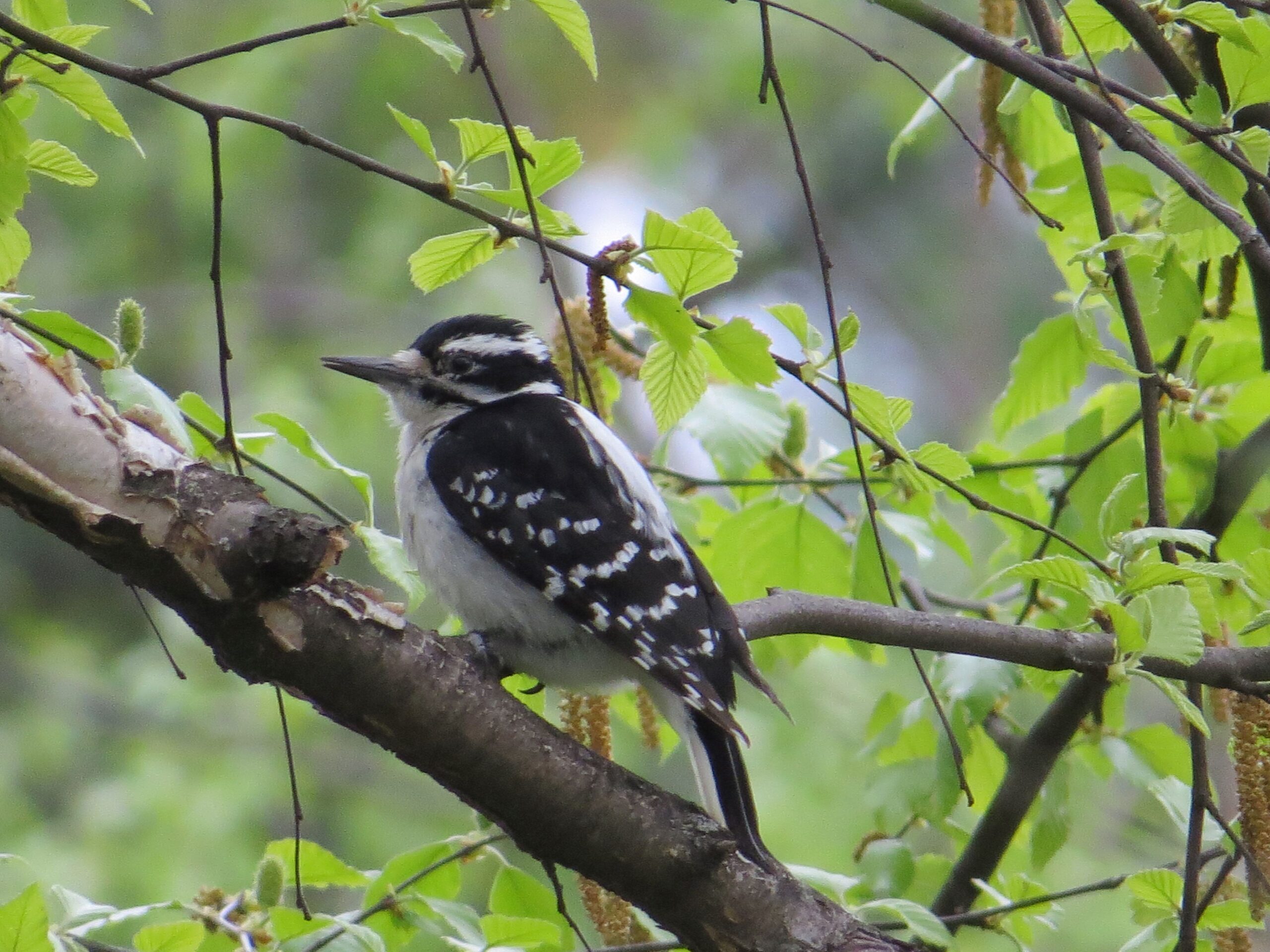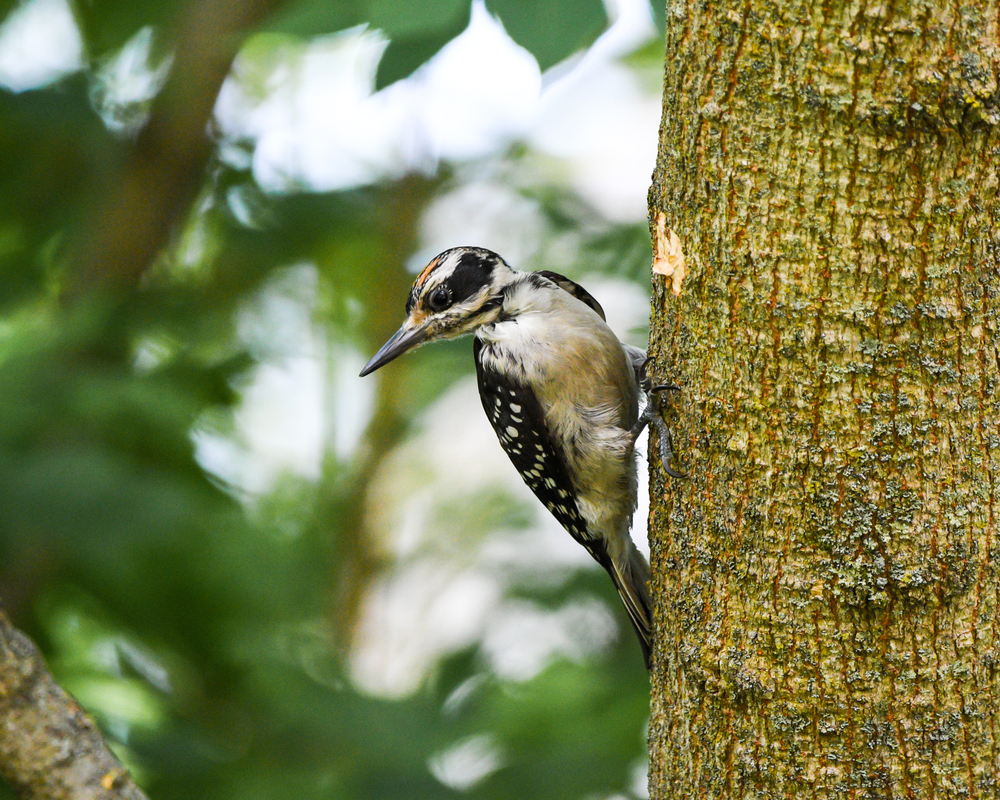
Hairy Woodpecker, Dryobates villosus
Bill Rowe
As you hike through any extensive woodland, sooner or later you will hear a loud, sharp peek! or speek! or sometimes a shrill, fast rattle—either way, a sure sign of a Hairy Woodpecker. And you think, maybe this time you will finally get a good look! The little Downy Woodpecker is familiar to everyone; its larger cousin the Hairy, not so much, at least here in the midwest. Among the reasons for this: the Hairy is more spread out and less numerous than the Downy, with fewer individuals in any given tract of forest; it is more restricted to mature woodland and less attracted to semi-open farmland or suburbia; and it tends to be more skittish and harder to get close to. Overall, though, it is a handsome and interesting bird that spans an even wider breeding range than the Downy, from Alaska across most of forested Canada, down through almost all of the United States (where the Downy’s range stops), and on south through higher elevations of Middle America to Costa Rica and Panama. It is also one of the more variable birds on our continent, divided into many subspecies, up to 17 depending on the authority—and remember that, for any bird, the naming of subspecies depends on the judgment of those authorities, and they will often disagree. Nonetheless, any birder can see obvious differences between, say, the Hairy Woodpeckers of Missouri, with their bold black-and white checkered wings, and those of the Rockies, with almost solidly black wings, or those of the Pacific northwest, with their smoky-gray underparts.
IDENTIFICATION: When perched, a Hairy’s black-and-white plumage pattern, including the white streak down the center of the back, separates it quickly from other woodpeckers except the Downy, which has nearly identical plumage. Hairies are distinctly larger, however, about the size of a Red-bellied or Red-headed, and with a much longer, stouter bill than a Downy’s. If you want some extra confirmation, check the outer tail feathers, which are pure white in a Hairy but have a few small black spots or bars in a Downy. And, finally, their calls are diagnostic, the Downy giving a rather quiet “pik” or a downslurred whinnying series of notes, unlike the Hairy’s loud, emphatic calls as described above. Male Hairies have a small red patch at the back of the head (see banner photo), missing in females (see below, left), while juvenile males have a broader patch of red or even yellow on the top of the head (the “crown”).
ST. LOUIS STATUS: Permanent resident, uncommon to fairly common, mostly in mature wooded areas. Outside the breeding season, may sometimes be found wandering elsewhere, including the suburbs and possibly your feeder.
Learn more and listen to the calls and drums of Hairy Woodpeckers here.


Female: no red patch. Also note all-white outer tail feathers
Photo Credit: Bill Rowe
Juvenile: note color on crown (in this bird, yellow/orange)




